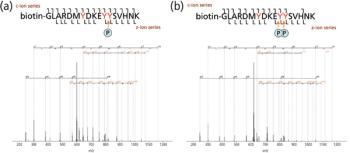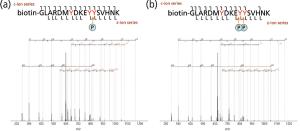Articles by Akira Tsuboyama

Protein and peptide analysis via tandem mass spectrometry (MS-MS) has resulted in a wealth of information regarding protein identification, structure, and abundance levels over the past 10 years. Techniques such as neutral loss scanning and collision-induced dissociation (CID) have been especially helpful in facilitating the identification of a multitude of previously unknown sites of protein phosphorylation. However, many of the techniques used to obtain this information are labor intensive and work inconsistently. To address this problem, much effort has been put forth to find alternative methods of fragmenting peptides and proteins that are less difficult and applicable to a wide gamut of peptide classes. Examples of recently developed dissociation techniques include infrared multiphoton dissociation (IRMPD) and electron transfer dissociation (ETD). The implementation of these new techniques has widened the spectrum of peptides amenable to tandem mass spectral analysis.

Successful characterization of protein posttranslational modifications (PTMs) is critical to our understanding of many biological processes. Unfortunately, attempts to describe PTMs often prove experimentally difficult and result in ambiguous conclusions. As technologies in the field of mass spectrometry (MS) continue to improve, people are turning increasingly to mass spectral techniques for PTM characterization. Recently, novel modes of peptide fragmentation have emerged that are giving scientists greater ability to elucidate protein posttranslational modification. One example is electron-capture dissociation (ECD), an alternative fragmentation mechanism for use in peptide analysis via tandem mass spectrometry. ECD selectively cleaves N-Cα bonds of the peptide backbone, yielding c- and z-ions without the loss of labile PTMs. ECD therefore holds advantages over conventional fragmentation techniques such as collisionally induced dissociation (CID), which often cleave PTMs from the peptide backbone,..




